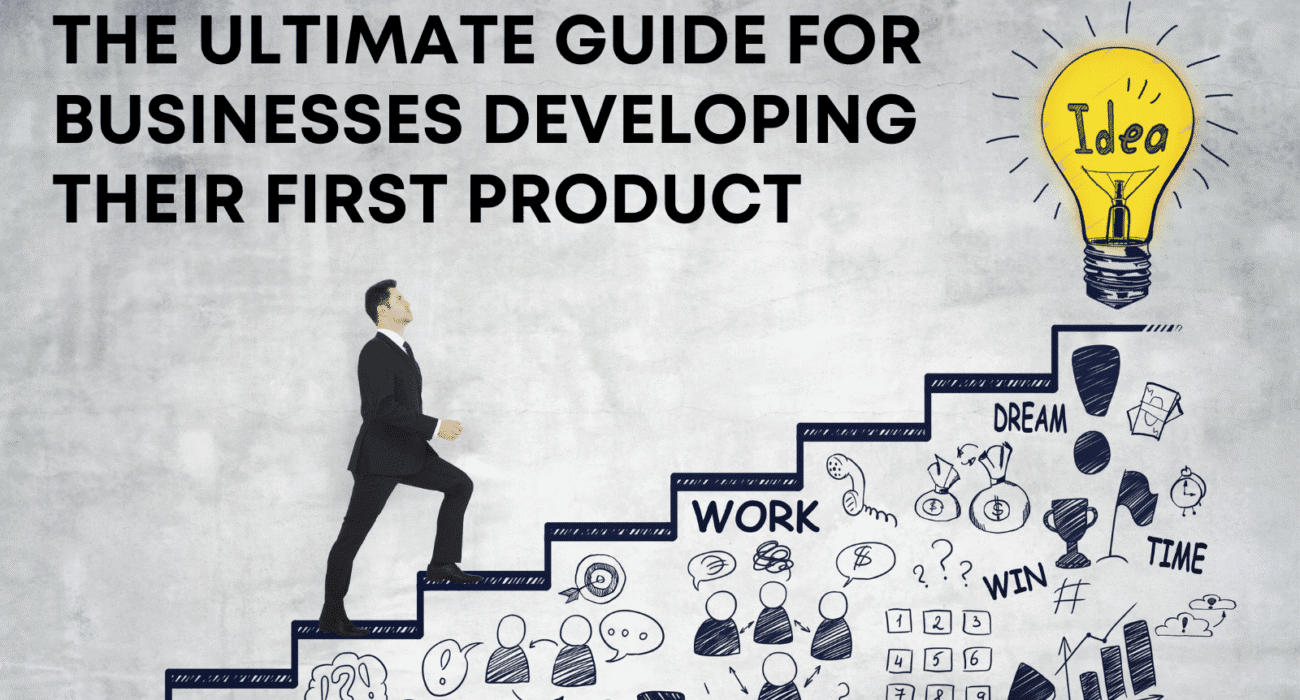Developing a new product is one of the most exciting yet challenging journeys for any business. Whether you’re a start-up founder with a ground-breaking idea or a small business owner looking to expand your offerings, bringing your first product to market requires careful planning, research, and execution.
This ultimate guide walks you through the essential steps, strategies, and best practices for businesses developing their first product. By the end, you’ll have a clear roadmap to transform your idea into a market-ready solution that resonates with customers.
Why Product Development Matters
In today’s competitive market, businesses can’t rely solely on existing services or products. Customers are constantly seeking innovative, valuable, and convenient solutions. Developing your first product gives you the opportunity to:
- Establish a strong brand identity
- Solve customer pain points directly
- Create new revenue streams
- Gain a competitive advantage
However, without the right approach, product development can be risky. Statistics show that a large percentage of new products fail due to poor planning, lack of market research, or inadequate testing. That’s why having a structured process is key.
Step 1: Define Your Product Idea
Every successful product starts with a strong idea. But not all ideas are worth pursuing.
Ask yourself:
- What problem does my product solve?
- Who is my target audience?
- How is this product different from existing solutions?
Brainstorm multiple ideas and filter them down to the one that aligns best with your business goals and customer needs. Tools like SWOT analysis (Strengths, Weaknesses, Opportunities, Threats) can help validate your concept.
Step 2: Conduct Market Research
Market research ensures you’re building a product people actually want. Gather insights through:
- Surveys and Interviews – Talk directly to potential customers.
- Competitor Analysis – Identify what’s already available and where gaps exist.
- Trend Reports – Stay updated on industry shifts and consumer behavior.
Example: If you’re creating a fitness app, look at competitors like MyFitnessPal or Nike Training Club. Find areas where they fall short—maybe personalization, local language options, or pricing—and build your advantage there.
Pro Tip: Many startups partner with the best website development service providers to create landing pages for early research and customer sign-ups. This helps validate demand before investing heavily in product development.
Step 3: Develop a Business Plan
A product isn’t just about design; it’s also about feasibility. A clear business plan outlines:
- Development costs
- Pricing strategy
- Marketing approach
- Revenue projections
Investors or stakeholders are more likely to support you if you present a structured plan. Even if you’re bootstrapping, having a plan helps keep your goals realistic and measurable.
Step 4: Build a Prototype
A prototype is a simplified version of your product. It helps you visualize how the product will function and allows you to gather early feedback.
- For physical products: Create a basic mock-up using 3D printing or simple materials.
- For digital products: Build a clickable wireframe or beta version.
If you’re developing an online solution, collaborating with an experienced ecommerce development agency can accelerate the prototype phase by ensuring your digital product is scalable, user-friendly, and market-ready.
Step 5: Test and Get Feedback
Testing is one of the most critical phases of product development. Share your prototype with a small group of target users and collect honest feedback.
Key questions to ask:
- Is the product easy to use?
- Does it solve the problem effectively?
- What features are missing?
Use this data to make improvements. Iteration at this stage saves significant time and money compared to fixing issues after launch.
Step 6: Plan Production and Sourcing
Once your product is validated, it’s time to plan production. Consider:
- Manufacturing: Will you produce in-house or outsource to a supplier?
- Materials: Are they cost-effective, sustainable, and reliable?
- Scalability: Can production increase if demand grows quickly?
For digital products, this step involves finalizing development, ensuring scalability of servers, and preparing for user growth. Partnering with the best website development service ensures your platform can handle growth without performance issues.
Step 7: Marketing Strategy and Branding
Even the best product can fail without proper marketing. Start building buzz before launch through:
- Brand Identity: Create a memorable logo, name, and packaging.
- Content Marketing: Write blogs, create videos, and share teasers on social media.
- Email Campaigns: Build anticipation with early sign-ups or beta testing invites.
- Influencer Collaborations: Partner with voices your audience trusts.
If your product involves online sales, collaborating with an ecommerce development agency can help you design optimized storefronts, seamless checkout systems, and integrated digital marketing strategies.
Step 8: Launch Your Product
Your launch is your chance to make a big impression. Ensure you have a detailed plan covering:
- Launch Event or Campaign: Online or offline, depending on your audience.
- Distribution Channels: E-commerce platforms, retail stores, or direct sales.
- Customer Support: Be ready to handle inquiries, feedback, and potential issues quickly.
Pro tip: Consider a “soft launch” with a smaller group before going public. This allows you to address last-minute issues.
Step 9: Post-Launch Monitoring
The journey doesn’t end with the launch. Monitor performance and collect feedback to continuously improve. Track:
- Sales numbers
- Customer reviews
- Website traffic and conversions
- Product return rates
Based on these insights, release updates, improvements, or additional features. Continuous improvement ensures long-term success.
Common Challenges in First-Time Product Development
- Budget Constraints – Overspending on design or production without considering ROI.
- Poor Market Fit – Building a product that doesn’t align with customer needs.
- Rushed Timelines – Skipping testing phases leads to product flaws.
- Weak Marketing – Launching without a clear promotional strategy.
Being aware of these challenges helps you proactively avoid them.
Tips for First-Time Product Developers
- Start small and scale gradually.
- Focus on customer feedback, not assumptions.
- Keep an eye on competitors, but don’t copy—innovate.
- Balance quality with affordability.
- Be patient—great products take time.
Final Thoughts
Developing your first product is a milestone that requires dedication, planning, and resilience. By following a structured process—from idea generation to post-launch analysis—you set your business up for success.
Remember: your first product doesn’t have to be perfect; it just has to solve a problem better than what’s already out there. With persistence and customer focus—and the right digital partners such as the best website development service or a reliable ecommerce development agency like Japnaaz Software—your idea can grow into a thriving business opportunity.

